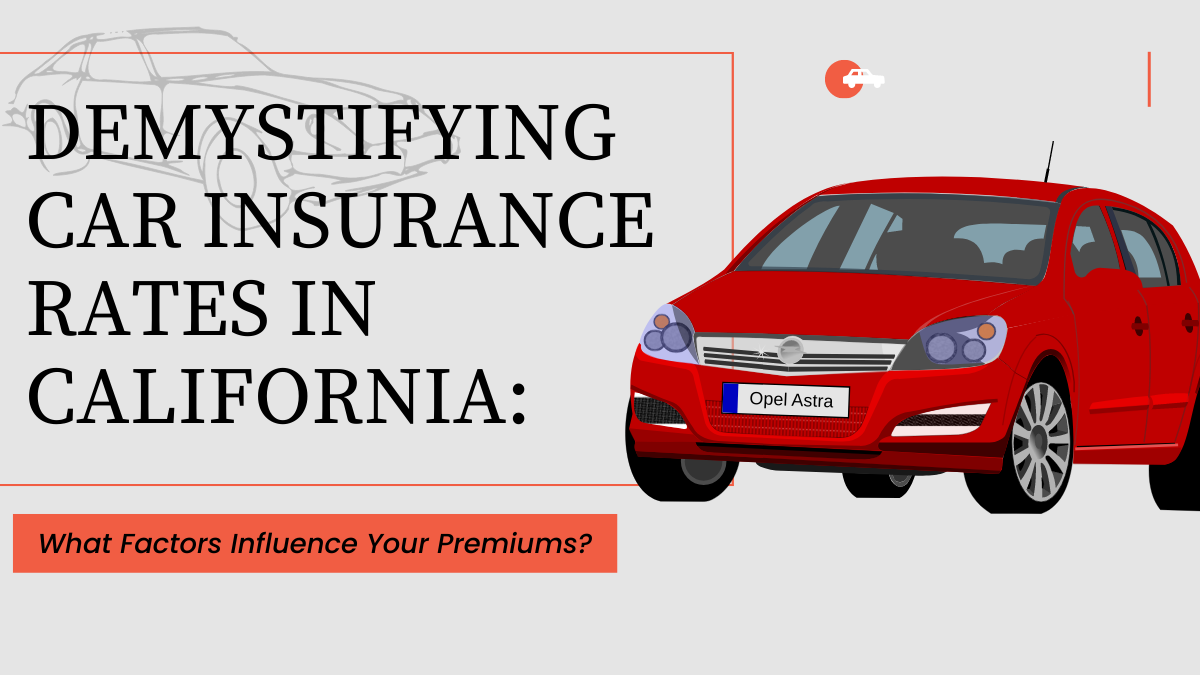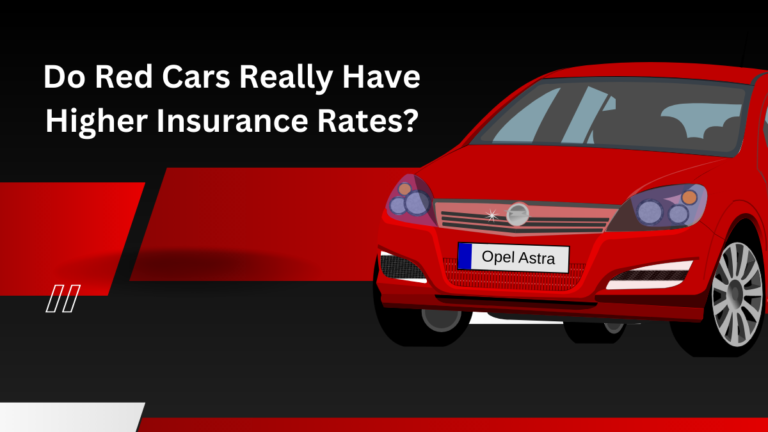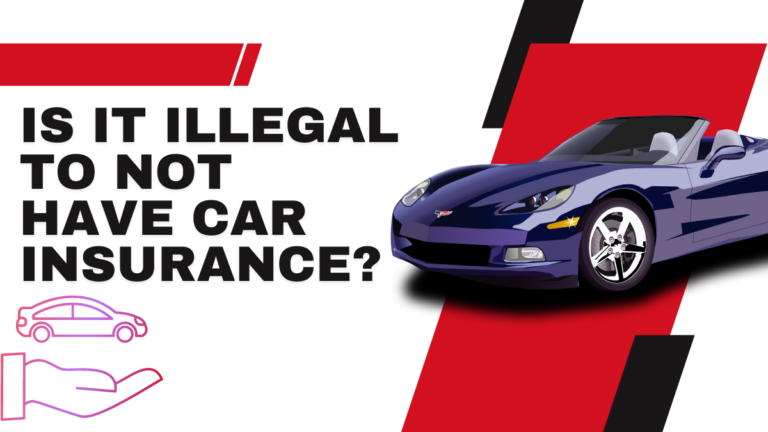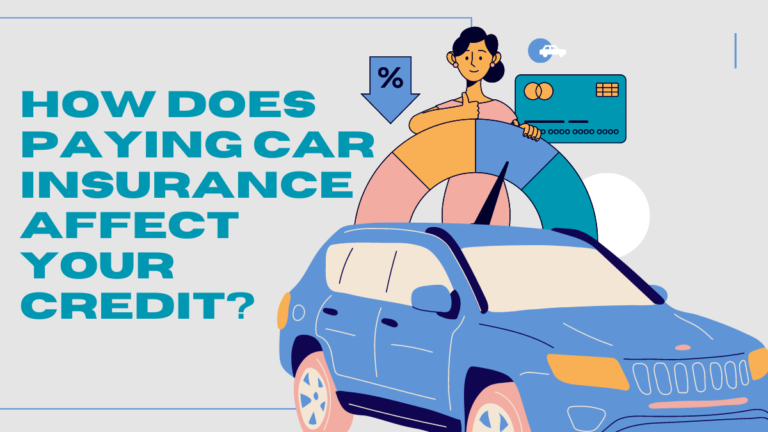Demystifying Car Insurance Rates in California: What Factors Influence Your Premiums?

Are you tired of the mystery surrounding car insurance rates in California? We feel your frustration! With so many factors at play, understanding why your premiums are what they are can sometimes seem like cracking a secret code. But fear not, dear readers! In this blog post, we’re demystifying the world of car insurance rates and uncovering the key factors that influence them. Buckle up as we take you on an engaging journey through California’s insurance landscape – because knowledge is power when it comes to your pocketbook!
Table of Contents
What factors influence your car insurance rates in California?
When Shopping for Car Insurance in California, the Three Most Important Factors to Consider Are Your Age, Your driving record, and the type of car you drive.
Age is the Most Important Factor When Shopping for Car Insurance in California. Children under 18 are typically not required to have car insurance, but they are still responsible for automobile accidents. Drivers between the ages of 18 and 24 typically need to carry full coverage on their policy, while drivers over 24 can typically get a reduced coverage option. The age of your vehicle also plays a big role in your premium rates. Older cars tend to be more expensive to insure than newer vehicles.
Your Driving Record is another Factor That impacts Your Car Insurance Rates in California. A clean driving record will usually result in lower rates, while a history of traffic violations or fatal accidents will generally lead to higher premiums. If you have had any recent car accidents, it’s important to speak with an insurance agent and see what options are available to you based on your specific situation.
The Type of Car You Drive Plays a Key Role in Your Premiums Too. The cost of insuring a vehicle depends largely on its make and model- so if you drive a popular brand such as Toyota or Honda, your rates will likely be lower than if you drive a less popular make or model. It’s also important to note that damage liability costs (the cost associated with insuring a car against bodily injury claims) increase significantly for cars that are used for commercial purposes . If you drive for a business, it’s important to speak with an insurance agent to see whether your policy covers commercial use.
Types of car insurance
There are many types of car insurance rates in California, and knowing which factors have the biggest impact on your premium can help you save money. Here are four types of rates and the factors that influence them:
- Single Coverage Rate:
This is the base rate for a single policy if you have no other policies on your vehicle. The more coverage you add, the higher your premium will be. Some common additions to a single coverage policy include rental property insurance, crash damage waiver (CDW) and uninsured motorist (UM) coverage.
- Family Coverage Rate:
If you have one or more auto policies with your chosen insurer, your family coverage rate will be slightly lower than if you only had a single coverage policy. In fact, some insurers offer family coverage at a discount off of their single-policy rate for certain combinations of auto coverages and credit scores.
- Adjustable Rate Policy (ARP):
An ARP is an adjustable-rate policy — that is, it has an automatically changing rate as determined by an index or formula. Many people take out ARPs when they first get drivers’ licenses because they’re confident that rates won’t go up very quickly and they can lock in their current price for a set period of time. However, even if interest rates stay low for an extended period of time, ARPs still may have variable rate features that could affect your premiums at renewal time.
- Uninsured Motorist (UM) Coverage:
With UM coverage, you’re reimbursing yourself for any possessions or loss that occurs as a result of an uninsured motorist hit-and-run. This coverage is vital if you live in a high-risk area, as UM rates for claims can be extremely high.
For specific information on how each of these rate factors can impact your premium, speak with a California car insurance agent.
How do your car insurance rates in California vary based on your driving record?
A driver’s car insurance rate is composed of multiple factors, including the driver’s age, driving record, and location. Here are five ways your car insurance rates in California can vary based on your driving record:
- Your premium may go up if you have a clean driving record.
- Your premium may go down if you have a track record of minor accidents or infractions.
- Your premium may go up if you live in a high-crime area.
- Your premium may go down if you are a young driver with no violations on your record.
- Premiums also can vary depending on the type of vehicle you drive, whether you own it or lease it, and whether you have roadside assistance coverage included in your policy.
How much are premiums for a specific type of car insurance?
Looking to get a better understanding of what factors influence car insurance rates in California? Our team has put together a list of the most common types of car insurance, and broken down the variables that affect premiums.
- Motorcycle Insurance:
In California, motorcycle insurance is mandatory for all drivers over 18 years old. This means that motorcycle rates typically cost more than rates for other vehicles. What factors determine how much your premium will be for motorcycle insurance? The make, model, year, and weight of your bike are all taken into consideration when calculating rates. If you have an injury or accident while driving your bike, you may also be required to carry increased coverage.
- Car Insurance for Minors:
Children under the age of 18 are not legally allowed to operate a vehicle without explicit permission from a parent or guardian. As a result, car insurance rates in California for minors will typically be higher than rates for adults. Some insurers may exclude children under 18 from certain coverages (like liability), while others may charge them more per month because they are considered inexperienced drivers.
- Renters Insurance:
Renter’s insurance is something that many people forget to purchase – but it’s essential! Renters insurance covers you if your property is damaged or stolen while you’re not occupying it. Typical costs associated with rental losses include unpaid rent, damages caused by a tenant who wasn’t supposed to be in the property at the time of the mishap, and replacement costs for lost or stolen items such as furniture , electronics, and catalytic converters.
- Uninsured Motorist Coverage:
If you’re involved in a car accident with an uninsured driver, your coverage may help pay for expenses related to the crash, such as medical bills, property damage, and lost wages. A personal injury attorney can provide you with more information about what uninsured motorist coverage offers and how to make sure you’re getting the best possible deal.
Despite the different factors that influence premiums, there are a few common elements that are used to calculate rates for all types of car insurance. These include your driving record, age, gender, and geographic location.
How do car insurance rates change over time?
Typically, car insurance rates in California change annually based on a number of factors such as your driving history, car make and model, and where you live. However, there are other factors that can also affect your rate and coverage. In this blog post, we’ll cover the basics of how California auto insurance rates work and what determines your premium.
To start with, understanding car insurance rates in California is important because they play an important role in determining how much you pay for vehicle coverage each month. The premiums you are quoted are typically a result of taking into account a number of factors including:
- Your driving record
Your insurer will use data from prior offenses to set your premium at the beginning of your policy term, unless you have had no traffic violations within the past three years. If you have any points on your license or significant accidents in the past, your premiums could be higher.
- Your age
Younger drivers generally pay less for auto insurance than older drivers because insurers believe they are less likely to be involved in an accident. Furthermore, young drivers have fewer years of driving experience and may face higher rates if they have been in multiple accidents.
- Your gender
Women tend to pay more for auto insurance than men due to societal pressures that discourage women from driving and participating in various activities that lead to accidents (such as night driving).
- The type of vehicle you drive
Vehicles that are considered modified or experimental (for example, high-performance sports cars) are typically subject to higher rates, while sedans and larger cars typically have lower rates.
- Your credit score
Your insurer may use your credit score when determining your premium. Generally, a good credit score means you are a low-risk driver and will be able to get lower premiums. However, your rate may still go up if you have a poor credit score.
- Your location
California has some of the most expensive auto insurance rates in the United States. This is because it has more expensive car models and drivers, as well as stricter driving laws and regulations than other states.

These are just a few of the many factors that can impact your car insurance rate. In addition to these general factors, your personal situation (such as whether you have children or are married) and the type of car you drive can also influence your premium.
Conclusion
In order to understand how car insurance premiums in California are determined, it is important to understand some of the factors that influence them. These include your age, driving history, location within the state and even whether or not you have children in the car with you. By gaining an understanding of these factors and how they relate to your specific situation, you can start tominimize your chances of paying high car insurance rates.






